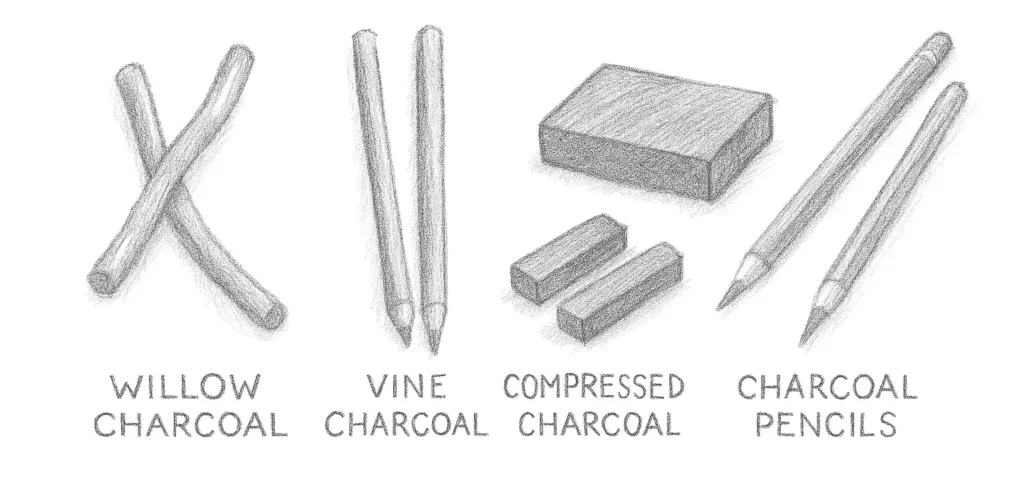Understanding the Different Types of Charcoal
Vine Charcoal
Soft, powdery, and easy to erase — vine charcoal is ideal for initial sketches, gesture drawings, and tonal blocking. It produces light to mid-grey marks that can be effortlessly smudged or lifted for softer effects.
Recommended: Winsor & Newton Vine Charcoal Set – perfect for sketching and underdrawing work.
Why I like it: Gentle, expressive lines that encourage freedom and spontaneity.
Willow Charcoal
Slightly denser and smoother than vine, willow charcoal offers more tonal control while retaining that velvety softness. It’s made from slender willow branches slowly carbonised to preserve their natural grain, producing consistent, rich lines that blend beautifully.
Best for: Life drawing, portrait studies, and atmospheric sketches where subtle gradation matters.
Recommended: Derwent Willow Charcoal Sticks – Assorted Thicknesses – excellent range for varying mark size and tone.
Why I like it: Exceptionally responsive to pressure — light strokes create delicate grey tones, while firmer lines build deep, velvety blacks.
Compressed Charcoal
For bold contrast and deep blacks, compressed charcoal is the best choice. It’s made by binding powdered charcoal with a small amount of gum or wax, giving it greater durability and intensity. Perfect for high-contrast work, detailed shading, or adding punch to larger compositions.
Recommended: Conte à Paris Compressed Charcoal Sticks (Soft, Medium, Hard)
Why I like it: Great tonal range — from precise edges to rich, dark fills.
Charcoal Pencils
If you want the look of charcoal with the precision of a pencil, charcoal pencils are ideal. They produce fine, controlled lines without the mess of loose sticks and are perfect for outlines, details, or adding contrast in mixed-media drawings.
Recommended: General’s Charcoal Pencil Set (includes white charcoal and sharpener)
Why I like it: Excellent control, travel-friendly, and great for layering detail over vine or willow sketches.

